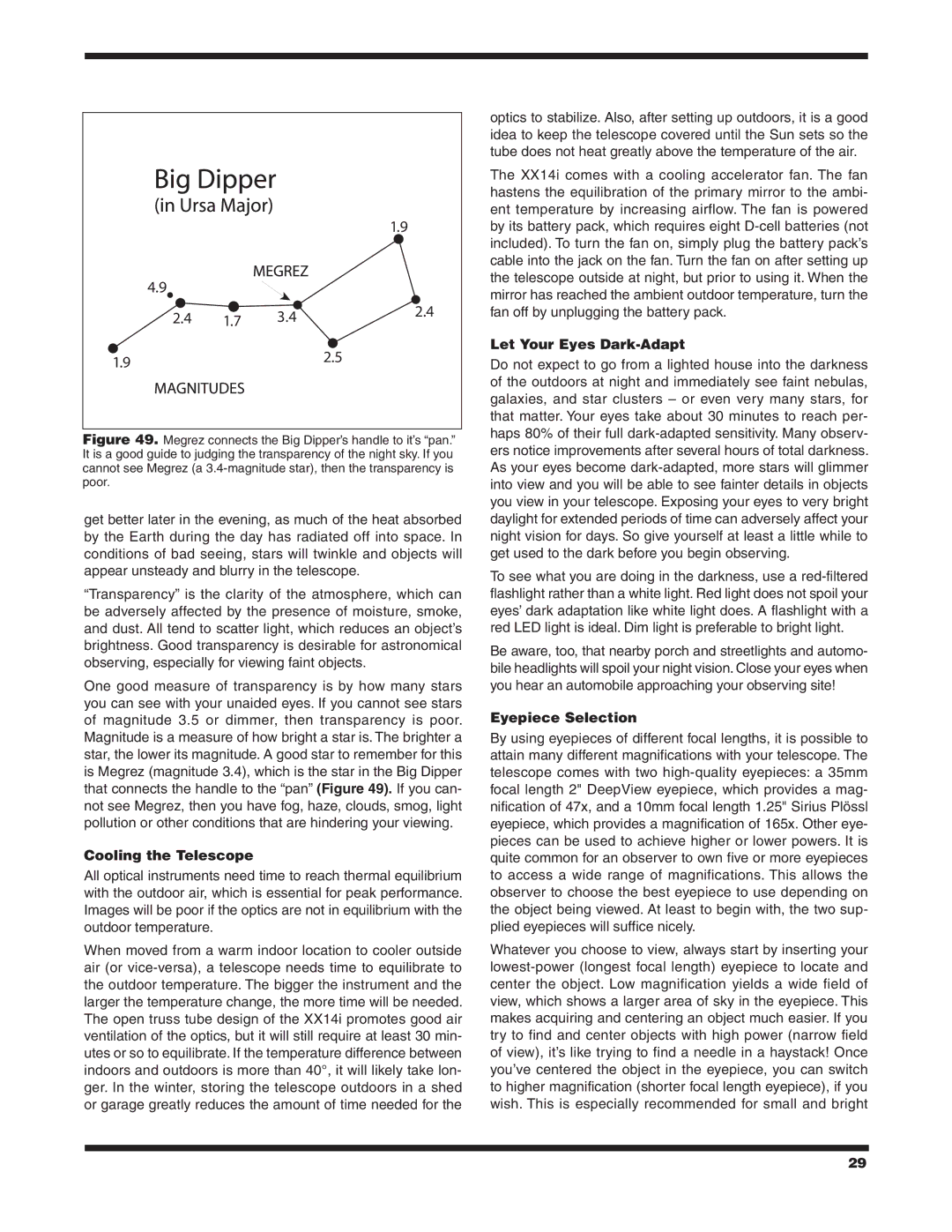
|
|
| 1.9 |
4.9 |
|
|
|
2.4 | 1.7 | 3.4 | 2.4 |
| |||
1.9 |
|
| 2.5 |
|
|
|
Figure 49. Megrez connects the Big Dipper’s handle to it’s “pan.” It is a good guide to judging the transparency of the night sky. If you cannot see Megrez (a 3.4-magnitude star), then the transparency is poor.
get better later in the evening, as much of the heat absorbed by the Earth during the day has radiated off into space. In conditions of bad seeing, stars will twinkle and objects will appear unsteady and blurry in the telescope.
“Transparency” is the clarity of the atmosphere, which can be adversely affected by the presence of moisture, smoke, and dust. All tend to scatter light, which reduces an object’s brightness. Good transparency is desirable for astronomical observing, especially for viewing faint objects.
One good measure of transparency is by how many stars you can see with your unaided eyes. If you cannot see stars of magnitude 3.5 or dimmer, then transparency is poor. Magnitude is a measure of how bright a star is. The brighter a star, the lower its magnitude. A good star to remember for this is Megrez (magnitude 3.4), which is the star in the Big Dipper that connects the handle to the “pan” (Figure 49). If you can- not see Megrez, then you have fog, haze, clouds, smog, light pollution or other conditions that are hindering your viewing.
Cooling the Telescope
All optical instruments need time to reach thermal equilibrium with the outdoor air, which is essential for peak performance. Images will be poor if the optics are not in equilibrium with the outdoor temperature.
When moved from a warm indoor location to cooler outside air (or
optics to stabilize. Also, after setting up outdoors, it is a good idea to keep the telescope covered until the Sun sets so the tube does not heat greatly above the temperature of the air.
The XX14i comes with a cooling accelerator fan. The fan hastens the equilibration of the primary mirror to the ambi- ent temperature by increasing airflow. The fan is powered by its battery pack, which requires eight
Let Your Eyes Dark-Adapt
Do not expect to go from a lighted house into the darkness of the outdoors at night and immediately see faint nebulas, galaxies, and star clusters – or even very many stars, for that matter. Your eyes take about 30 minutes to reach per- haps 80% of their full
To see what you are doing in the darkness, use a
Be aware, too, that nearby porch and streetlights and automo- bile headlights will spoil your night vision. Close your eyes when you hear an automobile approaching your observing site!
Eyepiece Selection
By using eyepieces of different focal lengths, it is possible to attain many different magnifications with your telescope. The telescope comes with two
Whatever you choose to view, always start by inserting your
29
